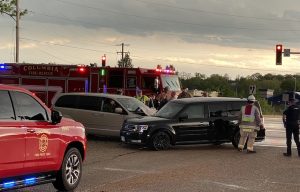A man and his camera: memories of the Korean War
(submitted photo)
Fred Meister’s involvement with photography stemmed from his Aunt Ida.
A 1946 graduate of Valmeyer High School, Meister told the Republic-Times about his aunt documenting family events with a box camera and how that made a lasting impression.
That passion and other chance events would connect the dots in a four-year active duty stint followed by 30 years of federal service in a top secret photography field. But that’s getting ahead of the story.
In 1947, Meister approached a recruiter for the recently established U.S. Air Force. Aunt Ida’s influence led him to tell the recruiter that he wanted to be engaged in photography. That decision turned out to be pivotal in his life.
Meister was sent to Fort Riley, Kan., to be sworn in. He almost didn’t get accepted there.
“I weighed in at 139 pounds. I needed to weigh 140 pounds. So I drank water. I drank a lot of water,” he related.
He quickly made the 140-pound benchmark.
Meister was sent from there to basic training at Lackland Air Force Base in Texas, and then to Air Force photography school at Lowry AFB in Denver. His performance there got him an opportunity to see the world, starting with a transfer to Clark Air Base in the Philippines.
He went from there to Far East Air Force Headquarters in Tokyo, and soon found himself shooting photos of the service’s involvement in the budding Korean Conflict.
Meister told of the hard work and long hours in the photo lab there, processing sets of 100 prints of each negative sent from Korea.
In October 1950, Meister was sent to Seoul, South Korea, where he supported war correspondents arriving there to cover the fighting. There, reporters and service representatives shared a large tent.
“I slept only two cots away from Margaret Higgins,” he told.
Higgins, an early female war correspondent who had already covered World War II, earned a Pulitzer Prize for her reporting from Korea.
The Inchon invasion was conducted then, and Allied forces swiftly drove North Korean forces back into their country and north toward China. Meister was sent to Korea three times: once in September 1950, again in November over Thanksgiving, and then a third time to document what proved, unfortunately, to be abortive peace talks with the North Koreans.
Meister was teamed with a senior public relations officer, Col. Jim Sweeney. The two loaded aboard a C-119 aircraft, called a Flying Box Car, and with a jeep, they were flown in a rough flight to Wonsan, North Korea.
There, Meister related, one very memorable task was going out overnight to photograph North Korean atrocities.
“They had captured many civilians and were marching them to North Korea to be employed as slave labor,” he said. “But they were moving too slowly and the Communists decided to kill them, dump them in a large hole and burn the bodies. Four survived, somehow.”
It was bitterly cold there, Meister said. He remembered sleeping one night in an abandoned North Korean base at 45 degrees below zero.
“I slept between two mattresses and was still very, very cold,” he said.
And it was there that he and Col. Sweeney received a stern order by telegram: “Get out of North Korea. The Chinese are coming.”
He told how they managed to get their Jeep onto a train freight car heading south, and riding with the jeep, escaped the Chinese swarming southward.
Meister was discharged from the Air Force in December 1951, having achieved extremely swift promotion to staff sergeant in only a single enlistment.
Photography in his early Air Force days was nothing like today’s digital image making that includes smart phones and often little more than button pushing.
Instead, he employed a Speed Graphic camera that weighed several pounds and used 4-by-5-inch sheets of film in 12-sheet film packs that had to be developed in a series of carefully mixed chemicals, at precise temperatures and times, agitated by hand, in total darkness, washed and dried.
Then they were printed individually – again developed in chemicals, washed and dried. If flash was needed, that came in the form of single-use flash bulbs.
In fact, Meister still has his Speed Graphic. Or at least it is close by. Along with a lifelong collection of more than 140 cameras, it is kept today in the Monroe County History Museum.
After Meister left active service, he went to work for the Aeronautical Chart and Information Center, known today as the National Geospatial-Intelligence Agency. There, he spent 30 years processing and duplicating top secret aerial reconnaissance imagery. It ranged from pictures taken by aircraft like the Francis Gary Powers U-2 spy plane, to early spy satellites that sent pictures to earth in reentry capsules designed to be snagged by C-119 Flying Box Cars as they parachuted earthward near Hawaii.
It was during that time, in 1958, that Meister built the home where he and his wife Edith (Law) lived, and where he still lives on Richards Street in Waterloo.
Meister is retired from his military and federal service. But that doesn’t mean he just stays at home. He has been affiliated with American Legion Post 901 in Valmeyer for 65 years now, and is active with the Masons.
And he still has a passion for photography — although that has been redirected to digital imagery and computer processing and sharing.
Aunt Ida’s box camera recorded a family’s life, for sure. But specifically, it also set the course for Meister’s service to his country for decades.
Stop by the Monroe County History Museum to see his Speed Graphic camera, his Air Force uniform and other memorabilia, where he and other veterans of the Korean and Vietnam conflicts are being honored and remembered.
The museum is located at 724 Elaine Drive in Waterloo.








